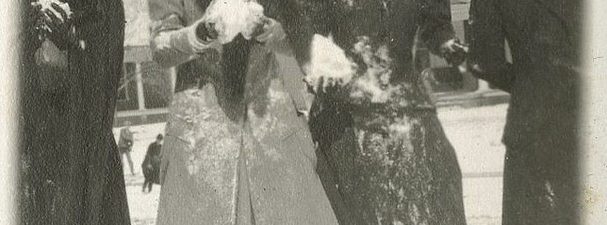by Carl F. Flynn, Director of Marketing & Communications for
Information Technology & University Libraries
 Today at 10:00 a.m. our former director, Kent Keeth, will be laid to rest at a graveside service at Oakwood Cemetery, just a few blocks away from The Texas Collection. Keeth’s 30 years of leadership charted a course for our library that made The Texas Collection a vital resource for scholars and others interested in the history of Baylor University, Texas history, and the cultural development of Texas.
Today at 10:00 a.m. our former director, Kent Keeth, will be laid to rest at a graveside service at Oakwood Cemetery, just a few blocks away from The Texas Collection. Keeth’s 30 years of leadership charted a course for our library that made The Texas Collection a vital resource for scholars and others interested in the history of Baylor University, Texas history, and the cultural development of Texas.
Keeth was born on August 25, 1938, in Marshall, Texas, to Lonnie and Hazel Keeth. He attended Baylor University and graduated in 1960. He majored in history, but had a wide range of interests and skills, minoring in English, Spanish, philosophy and economics. He went on from Baylor to earn an M.A. in history from the University of Wisconsin-Madison in 1961 and a Master of Library Science degree from the University of California at Berkeley the following year. From 1962-1964, Keeth organized and began operation of a new library at the Malaysian Teachers College in Kuala Lumpur, Malaysia. Then, from 1965-1968, he worked as a reference librarian for the Legislative Reference Service of the Library of Congress. As part of his duties, he performed reference and research services for Members of Congress, Congressional Committees and their staffs. Keeth then returned home to Texas, serving as an archivist for the Eugene C. Barker Texas History Center at the University of Texas at Austin. On June 1, 1973, at the request of Baylor President Abner McCall, Keeth returned to his alma mater as director of The Texas Collection.
Keeth believed that The Texas Collection should serve as a repository for early Texas history while also having an eye toward researchers years from now who will want to understand Texas culture. Under his direction, The Texas Collection acquired maps, documents and other artifacts that told the story of a time before Texas was a Republic, along with contemporary books, magazines, papers, postcards, photographs – anything that captured Texas as it developed. In addition, The Texas Collection gathered materials that recorded the history of Baylor University, and Keeth quickly became the unofficial historian of the university. In fact, the thing most people associate with Keeth are his “Looking Back at Baylor” articles that regularly appeared in the Baylor Line magazine. Keeth enjoyed researching and writing these articles and his work lives on through The Texas Collection’s online resources as we continue to share his work.Continue Reading














